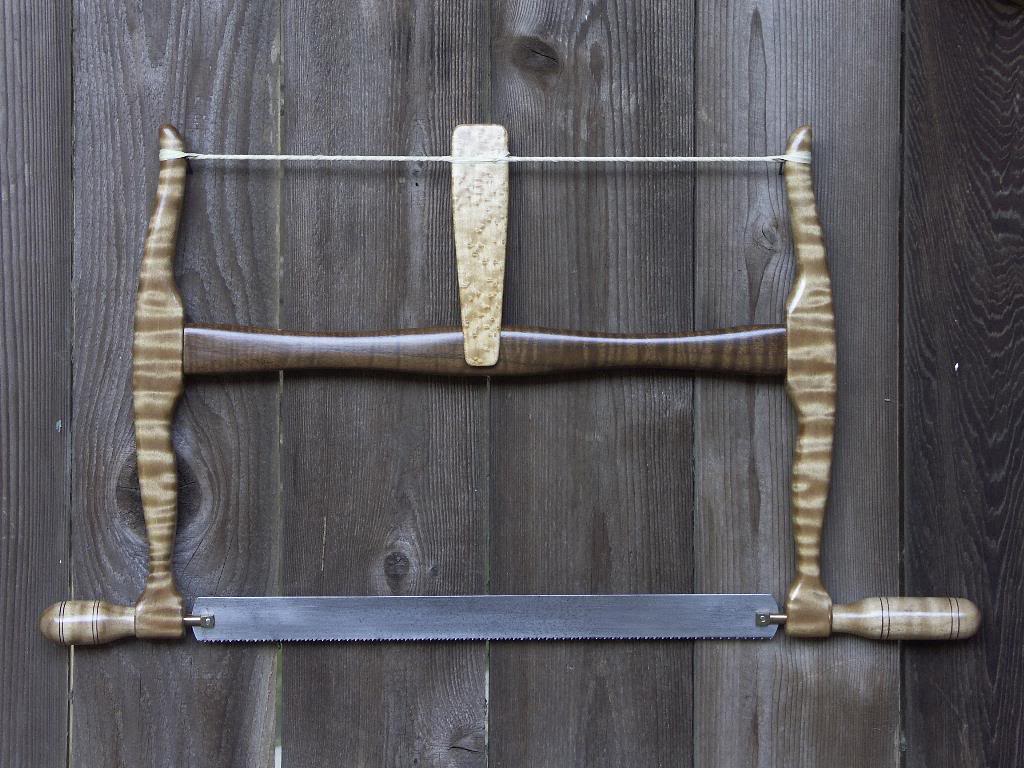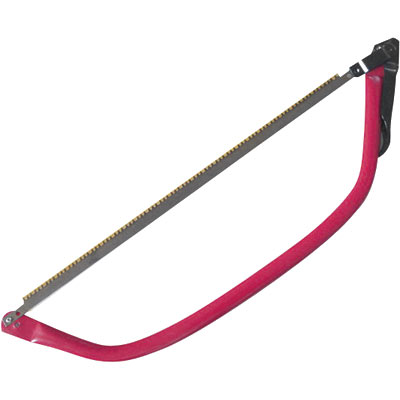|
I have just hosed up 4 uprights that I cut. For whatever reason I seem to be completely uncapable of cutting those "shoulders" that the long 2x4's will sit on. Ive cut them too deep so the upright is sticking out an 1/8" or more, hacked ruts into them trying to clean them up and my favorite - spent 30+ minutes getting just 1 upright, with 2 of those shoulders tight, clean and looking good only to realize I got one of them backwards. loving poo poo... My favorite is that the fitment seems to change drastically depending on which scrap 2x4 I use, from the same trip to Home Depot, from the same stack. Right now my process has been to actually get a scrap 2x4 flush to where it needs to be using a speed triangle and marking it. Then cutting the short side for the width of the 2x4 with the miter saw, then cutting the... length? with a circular saw that has the blade buried all the way down. It seems to get relatively close but I dont have a good surface to cut the 2x4s with the circular saw and end up spending more time then I should trying to clean it up. Good times nullfox fucked around with this message at 22:12 on Feb 28, 2010 |
|
|
|

|
| # ? May 15, 2024 05:36 |
|
Derek Dominoe posted:...is there any reason I need to keep hunting for fir or will pine be acceptable? The type of plywood won't matter. Looks like an interesting bench. WildFoxMedia posted:...then cutting the... length? with a circular saw that has the blade buried all the way down. Yikes, this sounds scary. I would probably just use a handsaw to make those cheek cuts.  One of the handiest types of handsaws you can own is the bowsaw with a rip blade. You can actually make one without much trouble but for those cheekcuts even one of the orange metal bowsaws made for limbing trees would be perfect. I wouldn't buy one just for that but if you already own one or can borrow one from a neighbor.   But you could also get by with a regular western hand saw or a Japanese style pull saw. wormil fucked around with this message at 22:49 on Feb 28, 2010 |
|
|
|
I found this lathe that I might fix up. I'm asking about it on a couple websites now. Depends on what they say. I want a lathe so bad.
|
|
|
|
wormil - Say I were completely incompetent of creating these shoulders with a miter saw and hand saw. Would you recommend a router for doing it? I've been considering getting a router for some time, but if this job would be made easier by acquiring one, which in my naive opinion it would seem so, then I will pick one up.
|
|
|
|
A router would make that 10x easier.
|
|
|
|
Well I have to disagree about the router. I think it would be harder with a router unless you had a router table but honestly I think you're doing fine. A simple stand out of 2x4s doesn't require precision joinery. Just take your time with it and enjoy the process, that's where the joy of a hobby comes into play.
|
|
|
|
thank you, I found that one and also this article when looking today http://www.wkfinetools.com/contrib/cSchwarz/z_art/drawBoring/drawBoring1.asp it also includes info for making your own drawbore pins, I don't how useful that is nor do I necessarily understand his stance that the pegs should be twisted in rather than knocked in, but I may have to experiment more
|
|
|
|
Blckbuster posted:nor do I necessarily understand his stance that the pegs should be twisted in rather than knocked in, but I may have to experiment more Well in anything you'll have those people who are convinced that the only right way of doing things is their way. I think those people are just so afraid of being wrong that they will go to any length to convince the world they are right.
|
|
|
|
Derek Dominoe posted:As far as I can tell, the plywood doesn't really serve a vital structural function; is there any reason I need to keep hunting for fir or will pine be acceptable? Spruce, pine, and fir are all pretty much identical. You'll be fine using any of them. Blckbuster posted:thank you, I found that one and also this article when looking today He is referring to the alignment pins. I'd guess he recommends against pounding them in because you might have a heck of a time getting them back out. For the actual wooden pegs, the diagram on page 2 says to hammer them in. Skunkduster fucked around with this message at 08:35 on Mar 1, 2010 |
|
|
|
I just ordered a woodworking book from amazon. You can't get anymore beginner than me. Do any of you guys recommend plans for beginners. I don't really care what the plan is for, I just need something easy to get me working. My dad is a carpenter so he probably has any tools I may need.
|
|
|
|
A lot of people seem to start out doing Adirondack chairs. So if your Dad has a bandsaw, tablesaw and a drill you'd pretty much be ready to make one. Lots of sanding the curves though, without a spindle sander. Got the lathe. Took the lathe apart. Made an electrolysis "tank" out of some oak boards and a tarp. Started zapping. Can't get the pulley off the headstock.      
|
|
|
|
Bicho6 posted:Do any of you guys recommend plans for beginners. Plans definitely make things easier. I've never made a chair but my early projects were the typical shelves, a couple of step stools, bookcases, then tables. One of the more interesting early projects was a dovetailed stepstool with half dovetail supports.    You can clearly see the mistakes I made, marking the dovetails too deeply (I sanded and sanded and finally said to hell with it), gaps in the half dovetails. I barely owned any tools and everything was cut with a hand miter saw, a hacksaw with a bandsaw blade, a few chisels and a wooden mallet made from 2x4s. The half dovetails are pinned with finishing nails and are a lot trickier to cut than they would appear, but they are very, very, strong. The wood is just 3/4" pine from Lowes. This stool is about ten years old and has been used almost everyday since I built it. I'm thinking of sanding it down and refinishing it. ChaoticSeven posted:Started zapping. I can't wait to see this.
|
|
|
|
ChaoticSeven posted:A lot of people seem to start out doing Adirondack chairs. So if your Dad has a bandsaw, tablesaw and a drill you'd pretty much be ready to make one. Lots of sanding the curves though, without a spindle sander. Neat. The rust doesn't look too horrid, mostly just surface rust. On the ways, anyway, and that's the most important part.
|
|
|
|
I don't think this is new thread worthy but I was hoping to get some tips for a project I was wanting to do. I'm wanting to build a dvd rack where the movies will be front facing, like you find at video stores, except made of wood. I'm planning on dedicating a wall of my apartment to this so space isn't a huge issue, but I still only have about 12' to work with if I put it where I'm thinking. Here are my initial thoughts: -I own ~300 movies, including box sets. Normal movies are 11" wide and 1/2" deep. The problem comes with the box sets, some of them are thinner, like TV shows, but some of them are quite wide like my Alfred Hitchcock collection. Is there a practical way to make all of these fit while still being uniform? -I'm planning on putting it either on either side of the TV which is 47" wide and (very roughly) 4-5' high from the floor, counting the entertainment center. I had one thought of building it to where it goes on one side, over the tv, and on the other side as well, as one whole piece. Is there a way to make it stable with the middle piece not being supported by the floor? I can attach it to the wall for extra support if need be. -What kind of wood should I use? The thing is going to end up being pretty big I assume and I'd like it to be moveable whenever I do move, but still sturdy so the racks don't sag while still being cost effecient. This is more of a fun project for me to do so I don't want to drop a ton of money on wood if I don't have to. Tools are covered. -Finally, is this doable for someone who's incredibly inexperienced with woodworking? The only stuff I've ever done is a lovely shelf in woodshop in middle school and this beer pong/flip cup/circle of death (kings) table:  Click here for the full 1280x853 image. (Which turned out looking like poo poo, btw) Any ideas and suggestions would be greatly appreciated, and any idea on how to design the thing would be really helpful too. Robert Analog fucked around with this message at 23:12 on Mar 1, 2010 |
|
|
|
Robert Analog posted:Normal movies are 11" wide and 1/2" deep. The problem comes with the box sets, some of them are thinner, like TV shows, but some of them are quite wide like my Alfred Hitchcock collection. 1. Why are your movies 11" wide? My DVDs are 5.5" wide? I don't think you have enough room. Normal (5.5") DVDs would take up 1650 linear inches side by side which is 275 linear feet. You have 12' of wall to dedicate, 275/12= 23 rows. Each row will be a minimum of 8.5" tall, 23*8.5= 195.5" (17' tall). So unless you have really tall ceilings, you won't make it. So I think you are going to need to turn some of them sideways. 2. If you're asking how to keep the shelves from sagging, you'll need something on the back of the shelves providing support. You can either use whole sheets of plywood or wooden strips. This might be of help: http://www.woodbin.com/calcs/sagulator.htm 3. I would use pine or popular. 4. Yes, it is doable. I would suggest you make it modular. Build it in pieces so that if you ever move, you can take it with you and arrange it to fit your new home. There are several ways to put something like this together. Dadoes would be the best but much more difficult without some woodworking experience and a tablesaw or router. Biscuits would be next best. DVDs aren't heavy, nothing compared to books. I built my DVD shelf using nothing but glue and biscuits and it's rock solid. You could also use pocket screws but I don't like them for this application. edit: an old picture of my shelves, this is from years ago. 
wormil fucked around with this message at 03:30 on Mar 2, 2010 |
|
|
|
ChaoticSeven posted:Another plane restoration. Thanks for the pictures and ideas Chaotic- I've been looking at getting a nicer jack plane and really didn't want to buy some POS from Home Depot / Lowes. Electrolysis would have never occurred to me, but it seems like the perfect solution. Got a nice Ohio Tool vintage #5 jack plane on the way from Ebay now, along with a battery charger and some boeshield for when it's complete- all for less than it would have cost me to buy a decent new jack plane. If you guys haven't heard of boeshield I really recommend checking it out for when you're finished with the electrolysis and sanding. It's a really nice alternative to wax/enamel and allows you to preserve the finish you get when it's all nice and clean. fake edit: Here's a link: http://www.amazon.com/Boeshield-Cor...67537290&sr=8-2 Only found out about it through Woodsmith podcasts, awesome stuff.
|
|
|
ChaoticSeven posted:As for the maple, is this what you mean: This is from page 24 or so, but I just wanted to say I scored yesterday. I was at my local supplier looking at birdseye, and when I stood up to leave, I glanced at the soft maple bin which just so happened to be above the birdseye. Right there on top of the pile was a 6" wide piece of curly. I pulled it out and the sucker was a full 12' long, almost 100% clear except for two little grape-size knots near one end. It's gorgeous, and I got it for about $4/bd. ft. Maybe even less, I can't remember. Not sure what I'm going to do with it yet.
|
|
|
|
|
ChaoticSeven posted:A lot of people seem to start out doing Adirondack chairs. So if your Dad has a bandsaw, tablesaw and a drill you'd pretty much be ready to make one. Lots of sanding the curves though, without a spindle sander. You really need to go in depth about this. What do you use for electrolytes?
|
|
|
|
Archives posted:You really need to go in depth about this. What do you use for electrolytes? ChaoticSeven (In another thread) posted:I didn't realize it bubbled paint like that either. I used baking soda cooked off in the oven at 375 for about an hour and a half to get sodium carbonate instead of bicarbonate, since I couldn't find washing soda anywhere locally. I put in a site to store shipping order at Ace's website since it's cheap there, though.
|
|
|
|
I may have to stop contributing "advice" to this thread. I'm way out of practice. It took me two and a half hours to make a crummy rabbet dado drawer.
|
|
|
|
wormil posted:Yeah I'm an idiot when I looked up the dimensions I guess they were referring to them opened. Also the more I looked at it last night at home the more unrealistic it seemed right now. My ceilings aren't 17' high and even if they were I really don't know what I'd do with DVDs 17' up in the air. So I'm eventually going to turn a spare room in a theater room and I'll look more into then, the walls in that room are probably 30' (I live in a weird shaped place). Thanks for the tips though!
|
|
|
|
I'm too poor to buy a jointer, and even if I did have sufficient funds, I have no idea where I'd put one. I assume that those without jointers somehow use hand planers instead. Could someone recommend me a (hopefully not too expensive) hand planer that would be suited for this job? Are there any special jigs or techniques used to get the edges of a piece of wood perpendicular to its face, or is it just something you get a feel for through trial and error?
|
|
|
|
nobody- posted:I'm too poor to buy a jointer, and even if I did have sufficient funds, I have no idea where I'd put one. I assume that those without jointers somehow use hand planers instead. Could someone recommend me a (hopefully not too expensive) hand planer that would be suited for this job? Are there any special jigs or techniques used to get the edges of a piece of wood perpendicular to its face, or is it just something you get a feel for through trial and error? 90% of a plane is a sharp blade and regardless of whether you buy a $250 Lie Nielson or a $10 Stanley, you still have to keep the blade razor sharp. So if you're poor, buy a cheaper jack plane and learn how to flatten the sole (which was discussed over the last couple of pages) and sharpen the blade. Chances are the sole will be pretty flat to begin with and you only need to make sure the head, toe and mouth on the same plane. And yeah, there are jigs and tricks to using a plane. http://www.finewoodworking.com/SkillsAndTechniques/SkillsAndTechniquesArticle.aspx?id=5218 http://www.finewoodworking.com/SkillsAndTechniques/SkillsAndTechniquesArticle.aspx?id=30138 Robert Analog posted:My ceilings aren't 17' high You should probably double check my math just to make sure I didn't make some crazy error.
|
|
|
|
nobody- posted:Are there any special jigs or techniques used to get the edges of a piece of wood perpendicular to its face, or is it just something you get a feel for through trial and error? You don't need any special jigs to get an edge perpendicular to the face. Just a couple boards with parallel faces and a couple clamps. From way back on page 10: SkunkDuster posted:You can use a guide board to easily get an edge square to the face of a board with a hand plane. You make a sandwich with a guide board (2), a spacer, and your workpiece (1). As you are planing, hold the side of the plane (3) against the guide board.
|
|
|
|
I bought a dovetail jig yesterday (a Leigh Super 12)...picked up some wood today and made a 6" deep 18"x9" box. First try, it came out drat near perfect. It's rock solid without any glue. I am so freaking excited right now. I can hardly wait. If I want to have the bottom of a box sitting in a slot, like a piece of 1/4" plywood as a bottom, permanently locked into a groove, how do I go about cutting that in conjunction with dovetailed corners? Is this one of those things where you simply have to break out the chisels (at least at the ends), or is there a more clever way? [edit] Like this, I guess? Is that pretty much it? Or is there something better? 
Bad Munki fucked around with this message at 04:28 on Mar 3, 2010 |
|
|
|
|
I think you could lay the board flat, and put a normal straight cutting bit in the router. You will have to make some pencil marks on your work piece and router table fence to tell you where to start and stop. Finish up the ends with a small chisel.
|
|
|
Yeah, thought that might be so. I have all those things, so that's fine, but I don't trust my hand with a chisel. Practice, I guess. 
|
|
|
|
|
SkunkDuster posted:You don't need any special jigs to get an edge perpendicular to the face. Just a couple boards with parallel faces and a couple clamps. From way back on page 10: Make sure that the sides of your plane are flat and perpendicular to the sole if you do this. Else uhm, yeah ,you know.
|
|
|
|
Quick question: I'm not building a shop anytime soon, but when I do, is it at all possible to get a fairly nice large bandsaw, and completely skip the Table (circular) saw? This would be in addition to a very nice Router table, and a seperate smaller palm router (Bosch Colt, almost a laminate trimmer). What would I be missing out on with this plan? One primary function I need is the ability to re-saw panels from large stock pieces (e.g. book-matched for guitar back & sides), which the table saw simply can't do. Just wondering if this would cripple certain functions terribly, or if there's simple things to consider. Thanks!
|
|
|
|
I'm sure there are bandsaw wizard gods out there who would do fine replacing a table saw with a bandsaw but I personally think it isn't practical. Limited width of cut. Limited surface area to support long or wide cuts. You aren't likely to get a glue surface edge on a bandsaw without a superb blade, guides and perfect alignment. I just don't see the point in it. Of course, there are the freaks who cut dovetails on the bandsaw soooo... Got the bed pretty well clean today. The ways aren't as incredibly shiny as they appear, it was just really bright today. They are nice and smooth, but they have the gray discolorations you'd expect after that much neglect. I could sand them out, but I don't want to risk changing the alignment of the head and tailstocks too much. It's a lot less important that it would be in a metal lathe, I'm sure, but I still won't do it unless someone says it doesn't matter or gives me tolerances. Also after much PB Blaster and sweat I got the pulley to rotate on the shaft today, and shortly after had it off. Pulled the bearings and took measurements for replacements. Headstock is in the bath now.  
|
|
|
|
Bicho6 posted:I just ordered a woodworking book from amazon. You can't get anymore beginner than me. Do any of you guys recommend plans for beginners. I don't really care what the plan is for, I just need something easy to get me working. My dad is a carpenter so he probably has any tools I may need. Yes, buy the CD with the first 7 or 8 issues of woodworking magazine on it. Go to Christopher Shwarz's blog and download the sawbench plans and make those. Branch out from there. Sawbenches arent hard and are insanely useful.
|
|
|
|
wormil posted:90% of a plane is a sharp blade and regardless of whether you buy a $250 Lie Nielson or a $10 Stanley, you still have to keep the blade razor sharp. So if you're poor, buy a cheaper jack plane and learn how to flatten the sole (which was discussed over the last couple of pages) and sharpen the blade. Chances are the sole will be pretty flat to begin with and you only need to make sure the head, toe and mouth on the same plane. And yeah, there are jigs and tricks to using a plane. Only adding info here, not contradicting, but if I only had one plane, it would be a No. 6. A Stanley No 6 is a fore plane, it is primarily meant for roughing work, but it can be made to do all sorts of work. I find the extra length of the 6 to be just enough to truly flatten 8' and shorter boards (like a jointer plane would) whereas I think the No.5 tops out at around 6' for ability to truly flatten a board. Please note that neither plane were designed or meant for doing coarse, medium, and fine work, but I feel that the 6 is the choice if you need one tool to do all these tasks. Most collectors tend to snub 6's due to Patrick Leach's craptacularly ignorant review of them, so they can be had for a song on ebay.
|
|
|
|
Cobalt60 posted:Quick question: I'm not building a shop anytime soon, but when I do, is it at all possible to get a fairly nice large bandsaw, and completely skip the Table (circular) saw? This would be in addition to a very nice Router table, and a seperate smaller palm router (Bosch Colt, almost a laminate trimmer). If you do a lot of sheet good work a bandsaw centric setup isn't going to work well. If you crosscut a lot of longer boards, you are going to need another tool like a sliding miter saw, radial arm saw, or track saw. If you don't have a jointer, unless you are also committed to handplanes, you are going to seriously struggle with a bandsaw only setup. Table saws truly suck at resawing, that is pretty well uncontested bandsaw territory. I will contest, until I am blue in the face, that bandsaws are significantly safer than table saws. They also do not make "center of the room" space demands like a table saw does. Unless you are only working on smaller items, a 14" bandsaw will not do for a bandsaw centric shop. 18" is the minimum in my book, with 24" being preferred. The general rule for me is: primarily engineered woods = table or panel saw, primarily solid woods = bandsaw (with a SCMS or a radial arm saw), primarily small items in solid wood = bandsaw only. My shop is bandsaw centric. I have an INCA 3 wheel bandsaw with a 20" throat. The #1 reason I have the INCA is that the saw is "backwards" from most, having the column on the right, and my shop simply can not work with a "normal" left column bandsaw due to door locations. This being said, I also have a radial arm saw that will only be replaced when I can afford a track saw. Life would be tough without either. I also do not have a router or router table yet, so rabbets are a either a total bitch on the radial arm saw, or a ton of work with my stanley 47. The RAS rules at dadoes, but groves (and the pain in the rear end rabbets) are rip operations which is never terribly safe or comfortable on the RAS. Final Word: If you are building guitars, you already need the best and biggest bandsaw you can afford and have the space for (same goes for router/shaper) so you may as well give bandsaw-only a shot. If it doesn't work then just add a table saw later. ChaoticSeven posted:You aren't likely to get a glue surface edge on a bandsaw without a superb blade, guides and perfect alignment. Ever tested your "straight off the table saw" glue joints to failure? Here's a spoiler: they are poo poo. Swirl marks or not, you need to be jointing ANY edge that is going to be glued, regardless of what cut it. ChaoticSeven posted:Of course, there are the freaks who cut dovetails on the bandsaw soooo... The Mark Duginski bandsaw dovetail jig is probably the easiest and most repeatable way to cut through-dovetails in existance. It rivals or exceeds the ease and repeatability of using a router to cut half blinds, and face it routers suck at cutting through dovetails. Let us also not forget that router cut dovetails have a minimum pin width, obnoxious levels of tearout, and that the only router dovetail jig out there that can do variable spacings well costs drat near what a decent Rikon bandsaw costs, and then you still have to buy a router. The bandsaw dovetail jig costs some time and scrap materials. Not meaning to be a dick, but there are serious and deep seated misconceptions about bandsaw accuracy and ability out there. It's my personal little quixotic crusade. Sweet work with the electrolysis, you have inspired me to get that going as I have almost all of the parts needed. I'm wondering if I should just Parkerize all my tools using the methods posted in the TFR threads, after cleaning them with electrolysis using the methods posted in the DIY threads. GEMorris fucked around with this message at 02:44 on Mar 4, 2010 |
|
|
|
GEMorris posted:
Sure, absolutely. GEMorris posted:Ever tested your "straight off the table saw" glue joints to failure? Here's a spoiler: they are poo poo. Swirl marks or not, you need to be jointing ANY edge that is going to be glued, regardless of what cut it. Actually, I did about 4 weeks ago when I was building that dovetailed bookshelf. I wasn't setting out to do it, just messing around with the offcuts I had when trimming the glued up panels square. Had a few that were 3-4 inches wide, 12 inches long, the depth of the shelves. I just started wacking them with my mallet. All of them failed along the wood grain, none separated at the glue line. Maybe that isn't the right way to test it, but I wasn't really setting out to do it. GEMorris posted:The Mark Duginski bandsaw dovetail jig is probably the easiest and most repeatable way to cut through-dovetails in existance. It rivals or exceeds the ease and repeatability of using a router to cut half blinds, and face it routers suck at cutting through dovetails. Let us also not forget that router cut dovetails have a minimum pin width, obnoxious levels of tearout, and that the only router dovetail jig out there that can do variable spacings well costs drat near what a decent Rikon bandsaw costs, and then you still have to buy a router. The bandsaw dovetail jig costs some time and scrap materials. Yeah, you really need to keep sharp bits, use a backer board and on really tearout prone wood even scribe a line along the bottom of the pins/tails. Blue painters tape helps some too. GEMorris posted:Sweet work with the electrolysis, you have inspired me to get that going as I have almost all of the parts needed. I'm wondering if I should just Parkerize all my tools using the methods posted in the TFR threads, after cleaning them with electrolysis using the methods posted in the DIY threads. Thanks, it's pretty fun. I'm starting to look at every rust encrusted piece of crap on the side of the road as a project now. Can you link me to those "Parkerize" threads in TFR? Oh yeah, what are you planning on zapping?
|
|
|
|
ChaoticSeven posted:Actually, I did about 4 weeks ago when I was building that dovetailed bookshelf. I wasn't setting out to do it, just messing around with the offcuts I had when trimming the glued up panels square. Had a few that were 3-4 inches wide, 12 inches long, the depth of the shelves. I just started wacking them with my mallet. All of them failed along the wood grain, none separated at the glue line. Maybe that isn't the right way to test it, but I wasn't really setting out to do it. Then they are certainly good enough. I'll concede that it can be done, if the saw is in proper tune which I am guessing yours was. Anything out of alignment (like the fence) or a dull blade will certainly change the story. ChaoticSeven posted:Yeah, you really need to keep sharp bits, use a backer board and on really tearout prone wood even scribe a line along the bottom of the pins/tails. Blue painters tape helps some too. That's a lot of maintenance and "makeready" as we would call it in the printing trade. Bandsaw pins need a reasonably functional blade and a homemade jig. The long term costs of blade wear vs bit wear would likely not stack up in the router's favor. Should I mention the noise differential and which machine will throw chips in your face? ChaoticSeven posted:Thanks, it's pretty fun. I'm starting to look at every rust encrusted piece of crap on the side of the road as a project now. Can you link me to those "Parkerize" threads in TFR? Oh yeah, what are you planning on zapping? I will look for them and edit this thread. Most are about restoring old guns and some may have been archived. Firstly I would be using those methods as needed on my new metal lathe. After that, I would probably start with my Millers Falls block planes and go from there. Edit: I can't find the TFR threads but 1. I didn't look terribly hard and 2. I have not spent much time there since 9mm became essentially an unavailable commodity in my area. But here is a great Home Shop Machinist thread on parkerizing. http://bbs.homeshopmachinist.net/showthread.php?t=39446 GEMorris fucked around with this message at 05:31 on Mar 4, 2010 |
|
|
|
GEMorris posted:vI will look for them and edit this thread. Most are about restoring old guns and some may have been archived. I would be interested in those as well.
|
|
|
|
Plane finally came in yesterday! Looks like it's actually in pretty good condition already, minus the rust and grime from years of sitting in a box somewhere. I'll post a picture when it's finished, seeing as there's already electrolysis porn over the last few pages and I won't be doing anything terribly different. For now I'll just be sanding... and sanding... and sanding...
|
|
|
|
ChaoticSeven posted:It's a lot less important that it would be in a metal lathe, I'm sure, but I still won't do it unless someone says it doesn't matter or gives me tolerances. You really don't want to do anything that puts the centres out of alignment, any spindle work that you have to reverse will cause you to swear profusely otherwise. As long as the tailstock and tool rests slide smoothly, I would suggest you leave it well alone. It looks impressive so far, I wouldn't think you could clean it up so well from that state. I don't recognise what it is, but I suppose that is because it is American, any ideas or was it just sold as is?
|
|
|
|
Just picked up this King table saw off Kijiji for 300$. I feel like I practically stole it from the guy. Came with a new Fence system and rolling platform for the bottom. Only missing the blade guard/splitter which is the reason for my post. Click here for the full 1024x768 image. Is there any way I can make a splitter? I don't think I want a full blade guard because I've found they get in the way of my cuts most of the time and actually cause me to be less confident. I was thinking just a 2"x6" piece of steel the same width as the blade with a slot for the bolt. Is this proper?
|
|
|
|

|
| # ? May 15, 2024 05:36 |
|
MarshallX posted:Is there any way I can make a splitter? Save yourself the time: http://www.leevalley.com/wood/page.aspx?c=2&p=65138&cat=1,41080,51225&ap=1 While you are there I highly recommend blade stiffeners on a TS: http://www.leevalley.com/wood/page.aspx?c=2&p=30075&cat=1,41080,51225&ap=2 GEMorris fucked around with this message at 16:52 on Mar 4, 2010 |
|
|























